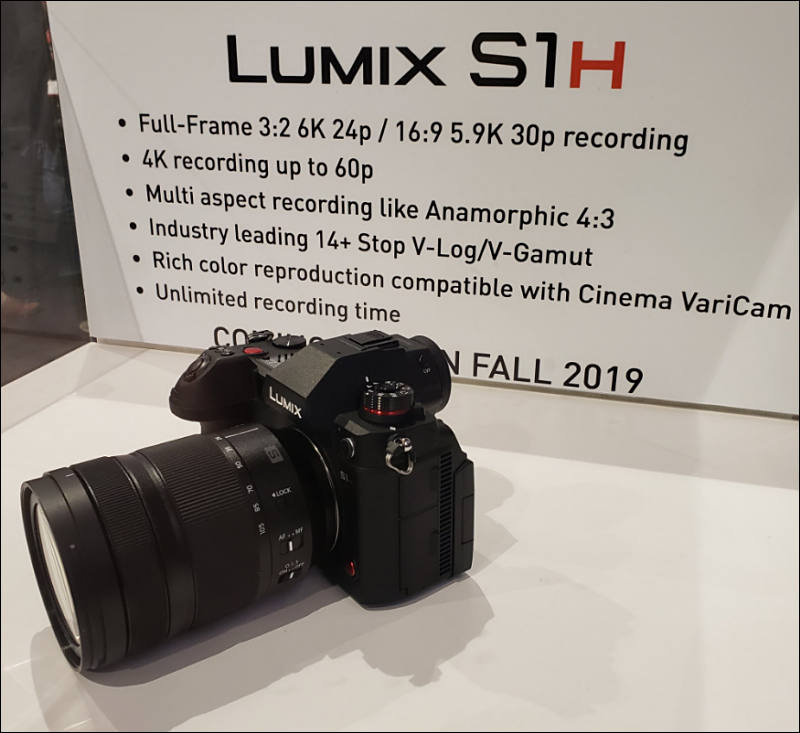
It allows to keep PV going, with more focus towards AI, but keeping be one of the few truly independent places.
-
High photo shooting performance as a digital camera
The LUMIX S1H captures both high-quality video and stunning still photos. It is capable of shooting images in 14-bit RAW format for precise reproduction of details.
Taking full advantage of its high-resolution sensor, the LUMIX S1H provides a High Resolution mode that faithfully captures even tiny details to be saved as beautiful, highly realistic RAW images. Eight consecutive images are automatically shot while shifting the sensor using the Body I.S. (Image Stabilizer) mechanism and synthesized into a 96-megapixel equivalent (12,000 x 8,000-pixel) image by the latest Venus Engine, which boasts high-speed signal processing. This mode is suitable for taking natural landscapes or fine arts with delicate details. This magnificently high-resolution photo is ideal for landscape photography of stationary subjects using a tripod. However, it can also be used in situations where moving subjects are included in the scene, by switching the sub mode.
Panasonic has achieved a high-speed AF with its advanced control technology over the major devices: lens, sensor and imaging engine. The lens and sensor communicate at a maximum 480 fps. Combining the Contrast AF with DFD technology, the LUMIX S1H realizes an ultra-high-speed, high-precision AF of approximately 0.08 sec^1^. The LUMIX S1H also boasts high-speed burst shooting at 9 fps (AFS) or 6 fps (AFC). With its high subject tracking performance, it never loses the target subject. A camera that excels in low-light shooting, the LUMIX S1H boasts -6EV^2^ luminance detection performance with Low Light AF thanks to the higher sensitivity and optimized tuning of the sensor. The face/eye detection technology makes it possible to capture people in crisp focus. The Eye AF even detects the pupil of the eye and precisely focuses on it for impressive portrait shooting. The LUMIX S1H also incorporates Advanced AI Technology that detects specific subjects - humans and fast-moving animals, including cats, dogs and birds. The camera continues tracking its subjects even when they turn their back to the camera.
For more continuous burst shooting, 6K PHOTO makes it possible to capture unmissable moments at 30 fps by extracting the frame with the best timing out of a 6K burst file (in 4:3 or 3:2 aspect ratio) to save as an approximate 18-megapixel equivalent high-resolution photo. 4K PHOTO enables 60-fps high-speed captures in approximate 8-megapixel equivalent resolution. In 6K PHOTO/4K PHOTO, three exclusive mode options are available depending on the situation; 6K Burst/4K Burst, 6K Burst (Start/Stop)/4K Burst (Start/Stop) and 6K Pre-burst/4K Pre-burst. Users can choose the most suitable burst shooting mode in addition to the regular consecutive shooting mode in full resolution, depending on the situation.
With the HLG Photo mode, Panasonic proposes a whole new style of photo expression It provides a wider dynamic range to reproduce light and shadow with more natural contrast. HLG Photos can also be produced as an HSP file with compressed high-brightness signals in its full resolution (5,888 x 3,312, in 16:9, with the LUMIX S1H) in addition to JPEG/RAW files. It excels in the expression of lights, such as sparkling starlight or glaring sunlight. The user can play back these vibrant images on the latest Panasonic HLG-compliant 4KTV via HDMI cable connection or other HLG-compliant devices. It is also ideal for photo presentations by photographers.
The high-precision shutter unit offers the highest shutter speed at a maximum 1/8000 second to capture spur-of-the-moment, fast-moving subjects and to use a high-speed lens with a fully open aperture even outdoors for impressive defocusing. The external flash can be synchronized with the industry's fastest shutter speed of a maximum 1/320 second.
The Highlight Weighted Light Metering Mode meters light with the priority on highlighted parts, to prevent them from washing out.
The S1H (body) will be available for $3999.99 at the end of September.
-
PR
Panasonic is proud to announce the launch of the LUMIX S1H, a new Digital Single Lens Mirrorless camera equipped with a full-frame image sensor, combining professional-level video quality with the high mobility of a mirrorless camera. The LUMIX S1H is the world's first camera capable of video recording at 6K/24p ^1^ (3:2 aspect ratio), 5.9K/30p (16:9 aspect ratio) and 10-bit 60p 4K/C4K ^2 ^*^3 ^an achievement previously revealed during development.
In addition to its long history developing cinematic cameras aligned with the film industry's needs, Panasonic also launched and continues to improve the world's first compact, lightweight, Digital Single Lens Mirrorless camera. Combining these innovative ideas resulted in the industry-leading LUMIX GH Series which proved that a digital still camera can record video in unprecedented high quality suitable filmmaking. Further integrating the potential of the full-frame sensor, Panasonic is proud to introduce the LUMIX S1H as the ultimate digital mirrorless camera packing its best possible performance.
A newly developed 24.2-megapixel full-frame image sensor complies with the new Dual Native ISO. In combination with the optimum signal processing by Venus Engine, it achieves high sensitivity while minimizing noise. The LUMIX S1H provides more than 14 stops of dynamic range, comparable to those found in cinema cameras, and V-Log / V-Gamut compatible with popular colorimetry called "VariCam Look." Uniquely, the LUMIX S1H features unlimited recording time in all recording modes thanks to Panasonic's unique heat dispersion technologies. HDR (High Dynamic Range) in HLG (Hybrid Log Gamma), 4:2:2 10-bit HDMI output and Anamorphic 4:3 modes are also available with a variety of practical tools for filmmaking, such as tally lights, a waveform monitor and a V-Log View Assist function.
The LUMIX S1H incorporates a Body I.S. (Image Stabilizer) to compensate for hand-shake movement. Combining the Body I.S. (5-axis) and the O.I.S. (Optical Image Stabilizer, 2-axis) in the LUMIX S Series lenses, the Dual I.S. 2 is even better positioned to compensate for virtually any type of blurring, allowing the use of a 6.5-stop*^4^ slower shutter speed. The new rear monitor, Real View Finder and Status LCD boast a large size, high resolution and high visibility. The rugged design creates an additional layer of attractive features, providing professional photographers with highly desired reliability and longevity.
Cinema-quality video recording performance
Outstanding video recording capability is the hallmark feature of the LUMIX S1H, making it an ideal professional tool for filmmaking.
The S1H contains a 24.2-megapixel 35mm full-frame CMOS sensor (35.6 mm x 23.8mm) that captures 6K resolution. With an active resolution of 6,024 x 4,016, the S1H delivers approximately 24.2 million photosites. OLPF adoption (Optical Low Pass Filter) suppresses moiré. In combination with optimum signal processing by the Venus Engine, it assures maximum ISO 51200 high sensitivity recording with minimum noise.
The distinguishing feature of the LUMIX S1H is dual-native ISO sensitivity, technology first introduced in the flagship VariCam line-up. It utilizes a process that reads the sensor in a fundamentally different way, extracting more information without degrading the image. This results in a camera that can switch from standard sensitivity to high sensitivity with almost no increase in noise or other artifacts. Dual Native ISO gives cinematographers a greater variety of artistic choices as well as the ability to use less light on set, effectively saving time. The LUMIX S1H's Dual Native ISOs are 640 and 4000*^1^, which allow cinematographers to shoot in virtually any lighting environment. With a single native ISO image sensor, normally, noise increases as sensitivity rises; however, the new image sensor with Dual Native ISO in the S1H minimizes noise generation by choosing an optimal circuit to use according to the sensitivity before gain processing. The result is a maximum ISO 51200 high sensitivity recording. This Dual Native ISO technology can be switched manually between LOW (ISO 640-5000) and HIGH (ISO 4000-51200).
Maximizing the use of the pixels in the full-frame image sensor, the LUMIX S1H, as a digital camera, achieves for the first time ever a 6K/24p, 5.4K/30p (3:2 aspect ratio) or 5.9K/30p (16:9 aspect ratio) high-resolution, smooth video recording. It is also the world's first full-frame digital interchangeable lens system camera*^1^ to enable 10-bit 60p 4K/C4K HEVC video recording when using the image area equivalent to Super 35mm. The 4:2:2 10-bit 4K30p can record in H.264 at its full area. Its high-resolution data can also be used for creating 4K videos with higher image quality or for cropping images in 4K.
Dynamic range measures the luminance range that a digital camera can capture. The LUMIX S1H delivers more than 14 stops of dynamic range, which are virtually the same as those of the Panasonic Cinema Cameras, to precisely reproduce both dark and bright areas.
The ability to capture accurate colors and rich skin tones is essential for any filmmaker. With this in mind, Panasonic created the LUMIX S1H to import the renowned colorimetry of the VariCam lineup of cinema cameras. The LUMIX S1H contains V-Log/V-Gamut capture to deliver a high dynamic range and broad colors. V-Log renders a very flat image while maintaining all of the color information within the image, so there is a greater level of play when the images are processed in post-production. The CMOS sensor of the LUMIX S1H achieves a wide color gamut known as V-Gamut, which is the S1H's optimum color space and achieves a color space that is wider than BT.2020. V-Log has log curve characteristics reminiscent of negative film, while V-Gamut delivers a color space even larger than film.
HDR (High Dynamic Range) video recording is an option, which reproduces both the bright and dark parts of an image, creating images identical to how they are perceived by the human eye. The camera records video with a designated gamma curve compatible with ITU-R BT.2100, and the user can now choose Hybrid Log Gamma (HLG) in Photo Style.
The LUMIX S1H is capable of 4:2:2 10-bit 4K 60p/50p HDMI output. It accommodates a variety of recording formats, including 4:3 Anamorphic mode, to meet professional needs.
The VFR (Variable Frame Rate) lets users record overcranked or undercranked video in C4K/4K (60 fps, maximum 2.5x slower in 24p) and FHD (180 fps, maximum 7.5x slower in 24p). The minimum frame rate for quick motion video is 2 fps. In addition, HFR (High Frame Rate) video with sound can be recorded even when using auto focus. A variety of effects are available for producing a slow motion video in post-production..
Practical tools like a Waveform Monitor and V-Log View Assist are also available. Tally lights are equipped on both the front and rear sides for use in a multiple camera setup.
High reliability to support professional work
The LUMIX S1H integrates the Body I.S. (Image Stabilizer) for effective handshake correction. Panasonic developed an algorithm that precisely calculates shake information acquired from a gyro sensor, and image and accelerometer sensors. This enables more accurate shake detection and compensation, making it possible to use a 6-stop slower shutter speed^1^. Combining the Body I.S. (5-axis) in the camera and the O.I.S. (Optical Image Stabilizer, 2-axis) in the LUMIX S Series lens, the 5-axis Dual I.S. 2 compensates for larger movements that were conventionally uncontrollable. Maximizing both O.I.S. and B.I.S. is highly beneficial in telephoto shots and in adverse situations, such as in low-light or with one-handed shooting with a 6.5-stop slower shutter speed^2^. The 5-axis Dual I.S. 2 works for both photo and video recording, including 4K. The Body I.S. compensates for camera movement even when other L-Mount lenses without O.I.S. are used.
To achieve stable, continuous video recording, heat dispersion is crucial. Based on the accumulated study of heat simulation through the development of both professional cinema cameras and digital still cameras, Panasonic designed a cooling fan with an innovative structure that efficiently disperses heat exclusively for the LUMIX S1H to support its limitless video recording capability.
To be tough enough to withstand heavy field use, the main structure is composed of a magnesium alloy full die-cast top/front/rear frame. Robust construction and a sealing for every joint, dial and button make the LUMIX S1H not only splash-resistant^3^ and dust-resistant^3^ but also freeze-resistant down to -10 degrees Centigrade. The shutter unit is also durable for approximately 400,000 cycles.
The LUMIX S1H is equipped with a double SD Memory Card slot, compatible with the high-speed, high-capacity UHS-II and Video Speed Class 90. Users can flexibly choose the recording method from Relay Recording, Backup Recording or Allocation Recording which enables saving video and photo data in a separate card. The 7.4-V 3,050 mAh high-capacity battery achieves a long recording time of approximately two hours in all recording modes. The battery can be quickly charged via USB PD (USB Power Delivery) using the bundled USB3.1 Type-C cable, which also realizes high-speed data transfer.
Expandability for creative freedom
The LUMIX S1H complies with 4:2:2 10-bit 4K 60p/50p HDMI output. For the terminal, an HDMI Type A is provided. Plus, a cable lock holder for the HDMI cable is included in the LUMIX S1H to prevent unplugging trouble on location.
The LUMIX S1H is also compatible with Time Code IN/OUT synchronization through the flash synchro terminal and bundled BNC converter cable with BNC cable. This makes non-linear editing of footage from multiple cameras easy.
A variety of accessories can be used for the LUMIX S1H in common with the S1R and S1 -- a Microphone Adaptor (DMW-XLR1), Remote Shutter (DMW-RS2), Eyecup (DMW-EC6), Battery Grip (DMW-BGS1), Battery Charger (DMW-BTC14) and more. The Microphone Adaptor is a plug-in adaptor for an XLR microphone to record high-quality stereo sound and is ideal for lip-sync recording. Dedicated switches allow direct, quick control between MIC, LINE and CONDENSER microphones. The Battery Charger also complies with USB PD and enables quick power charging in approximately two hours. The camera remains usable while charging via this adaptor. The conventional External Flash (DMW-FL580L / FL360L / FL200L) can also be mounted on the LUMIX S Series cameras.
Compatibility with Bluetooth 4.2 (called BLE: Bluetooth Low Energy) enables constant connection with a smartphone or tablet with minimum power consumption. The settings of a LUMIX S1H camera can also be copied and transmitted wirelessly to other S1H cameras when using multiple S1H cameras. Also, Wi-Fi 5-GHz (IEEE802.11ac) is effective in addition to 2.4-GHz (IEEE802.11b/g/n). This provides secure and stable connection not only with a smartphone or tablet, but also with other devices on location for smooth remote control. The transmission speed of photo/video data is also increased by using the 5-GHz band*^2^. The LUMIX Sync application for iOS/Android devices enables photo transmission to a smartphone or a tablet via easy wireless connection. It also allows remote control of the camera using these devices.
Application software LUMIX Tether enables tethered shooting. Users can control the camera by connecting it to a PC via USB, which lets them view the image on a large PC screen while shooting.
The LUMIX S1H employs three large, high-resolution display devices for smooth confirmation of images on the spot.
The 3.2-inch, 2,330K-dot in 3:2 aspect rear monitor features approximately 150 percent higher luminance compared with the LUMIX S1R/S1, GH5 and GH5S for high visibility in outdoor use. Adopting a new mechanical structure, it achieves both tilt and rotation movement so that users can easily change angles without unplugging HDMI, USB or other cables. Live View Boost is another practical feature that makes it possible to check the composition even in total darkness by boosting the sensitivity just for live view. It also incorporates a Night mode that provides mild backlighting and lets the user watch the subject comfortably, even immediately after viewing the monitor in a dark environment for a long time.
The LVF (Live View Finder) is the key factor for completing the ultra-high-speed response of the camera. The LUMIX S1H, as well as the S1R and S1boasts the world's highest Real View Finder level of 5,760k-dot resolution.* The 0.78x magnification ratio can be switched to 0.7x or 0.74x according to the shooting situation. Adoption of a high-speed, high-precision OLED for the LVF achieves a smooth display at 60 fps/120 fps (switchable) and high-speed response with minimum lag time of approximately 0.005 sec as well as 10,000:1 high contrast for exceptional visibility. With minimum distortion and high optical performance, the Real View Finder provides a natural view as seen with the naked eye. It is consistently sharp and clear from the center to the corners.
The new Status LCD boasts the largest-in-class level of 1.8-inch size and high resolution. Adopting MIP (Memory In Pixel technology), it consumes minimum power and is ideal for always-on use, even when the camera power is off. It shows the recordable time for video, number of images and remaining battery with a black/white switchable background. It assures high visibility both in bright outdoor and in dark situations thanks to the reflective type of LCD with a backlight. Major settings for photo shooting or video recording are displayed. The response of the LCD is also fast enough for time code counting and audio monitoring.
The LUMIX S1H has multiple Fn buttons on its body front allowing quick access to the designated functions, as well as a touch control system. A sub video button is also situated on the front so that the user can reach the button from the left side. Most of the buttons can be customized to assign functions depending on usage.
-

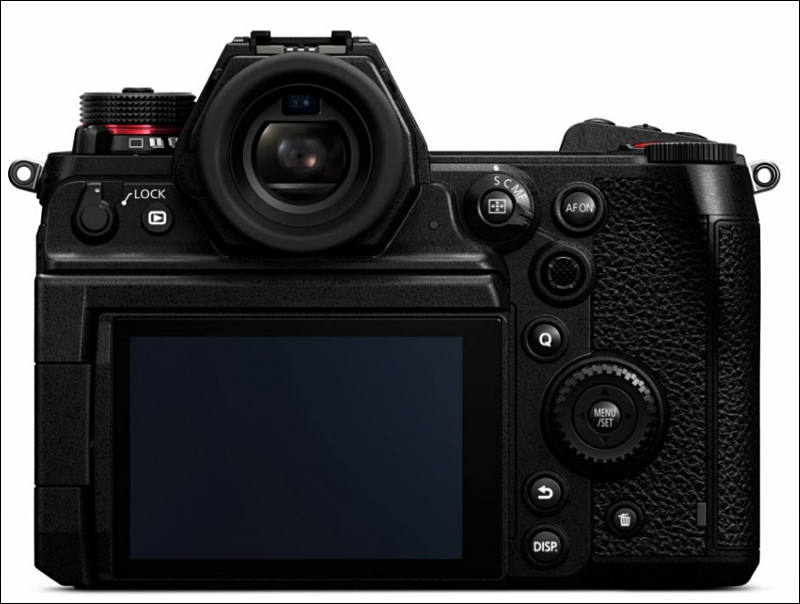
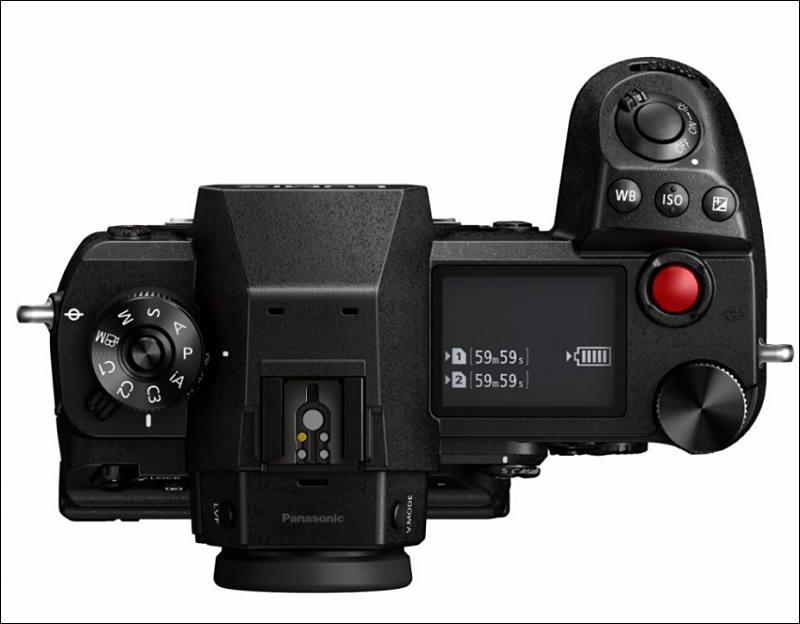

 sa9773.jpg800 x 633 - 63K
sa9773.jpg800 x 633 - 63K
 sa9774.jpg800 x 604 - 54K
sa9774.jpg800 x 604 - 54K
 sa9775.jpg800 x 624 - 49K
sa9775.jpg800 x 624 - 49K -
$3997.99 price rumored, one without licenses cost.
-
Next stage of announcement
-
I am receiving first whispers about a possible September press event. We could get the full SH1 specs and pricing info plus the two new 24-70 and 70-200 f/2.8 S lens release….
Well, something tells me that they can wait for IBC.
-
Yet most division different is now in US marketing teams :-)
In Japan it is now parts of one division.
-
It’s like Panasonic’s consumer division would go to great lengths to enable so many things yet their pro division is conservative when it comes to what features they can put. Boggles my mind.
-
Panasonic S1H has IBIS
-
Our interview
-
Extra $199 only :-)
-
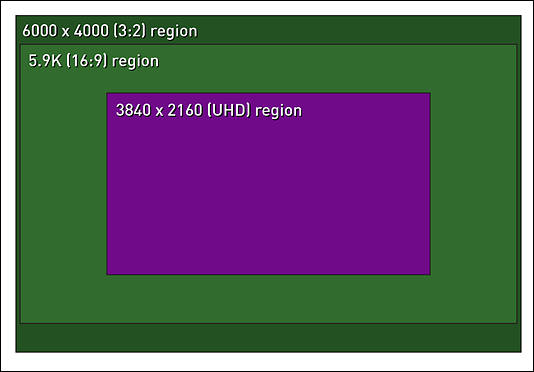
Panasonic is working on a way to deliver the sensor's Raw output (in a manageable bit-depth) across the HDMI port, to allow the potential for ProRes Raw or CinemaDNG Raw capture using an external recorde

 sa8612.jpg534 x 372 - 25K
sa8612.jpg534 x 372 - 25K -
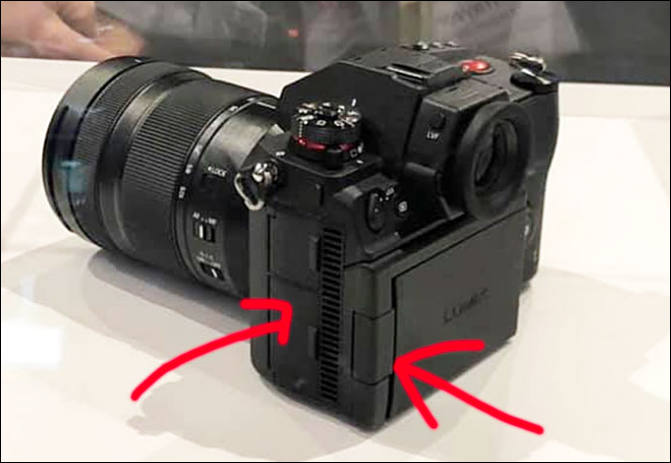
So, some homework Panasonic made.
But LSI really sucks looking at big vent holes and internal fan.

 sa8610.jpg671 x 463 - 38K
sa8610.jpg671 x 463 - 38K -
I feel the need to add, I like Panasonic, and if it weren't for the GH2 (and a little help from the PV team) I would not have so much amazing footage of my life here in Japan. I also enjoyed my first encounter with Panasonic at CP+2018 and could feel that everyone in the room truly cared and were proud of the camera's they were producing, it's a similar experience I had with Tamron, Olympus, and a few others, where they are invested emotionally in the product, and it is why these companies always produce products their customers are very excited about. I will not mention names but there are a couple big camera companies I never get that feeling from when I talk to them. It's more like talking to a cold pre programmed brochure in the shape of a human. Panasonic clearly has upper level that thinks the cold company model is best, but this is very wrong, and if Panasonic opened up a bit and let those with heart and at the heart of engineering these camera's lead and talk to the public, they would come away with the gold cup very quickly.
-
@VK, yes, I deleted part of my post which is similar. Also knowing a bit of the Japanese mind, I think it is likely many of the prouder older men in these companies have a pipe dream vision of recapturing the moment before all went digital and they were able to sell top consumer camera's for $5000. Digital has finally caught up or surpassed film, so why not right? Except that was 1980's and early 90's when the public was clueless about the massive economic bubble. The public now as a whole is very aware of the new very thin hologram of a bubble being resurrected by the crooks at the top of our so called economy. I think they know very well that these camera's will not sell in Japan, but are hoping the US and others will buy them. The problem is they don't have a clear view of the world economy, just a presentation of how the rich are doing so well, but not seeing it is because they are crushing the consumer class.
-
I have big issues with current camera companies management.
But my present core theory is that they just do not understand wider picture with economics. Similar to some strange guys who asked me to remove any economics on PV and focus on daylong camera guided masturbation. :-)
Back in the days it had been all simple. Each LSI is more powerful, it is cheaper, memory is cheaper, all is cheaper, sensors is better and cheaper. And suddenly it is no longer the case. So they first fucked up compacts making smartphones responsible for their own errors. Last and this year they started to destroy amateur DSLRs and mirrorless cameras that are responsible for around 90-95% of sales if you count bodies. They dream on how they expand 5-10% niche around 3x in same time doubling the price and hence keeping total money around same with 3x profits. But it is wet dream. They soon will be woken up by mother nature and will find that all this time they fucked dirty blanket and they are all messy in their own pollution results.
-
It feels like Panasonic is trying to squeeze the last bit of money from rich and uninformed before getting back down to reality. Maybe better put, riding high on the success of GH5 and GH5s and hoping some of those users prefer to come along with Panasonic to full frame regardless of price. It is hard to imagine they will produce many of these camera's, and seems like they are just going through the motions of creating a stepping stone to 8K full frame, and then micro four thirds 8K just in time for the Olympics. You don't get rich selling heavy camera's to a few professionals going to the Olympics, and Panasonic knows this. You do build hype though if you are not careless and price yourself out of the spotlight... ooOOPS.
-
Well, yes, as this time rumors had been almost all wrong.
Howdy, Stranger!
It looks like you're new here. If you want to get involved, click one of these buttons!
Categories
- Topics List24,080
- Blog5,725
- General and News1,395
- Hacks and Patches1,153
- ↳ Top Settings33
- ↳ Beginners256
- ↳ Archives402
- ↳ Hacks News and Development56
- Cameras2,393
- ↳ Panasonic995
- ↳ Canon118
- ↳ Sony156
- ↳ Nikon96
- ↳ Pentax and Samsung70
- ↳ Olympus and Fujifilm102
- ↳ Compacts and Camcorders300
- ↳ Smartphones for video97
- ↳ Pro Video Cameras191
- ↳ BlackMagic and other raw cameras141
- Skill1,960
- ↳ Business and distribution66
- ↳ Preparation, scripts and legal38
- ↳ Art149
- ↳ Import, Convert, Exporting291
- ↳ Editors191
- ↳ Effects and stunts115
- ↳ Color grading197
- ↳ Sound and Music280
- ↳ Lighting96
- ↳ Software and storage tips266
- Gear5,420
- ↳ Filters, Adapters, Matte boxes344
- ↳ Lenses1,582
- ↳ Follow focus and gears93
- ↳ Sound499
- ↳ Lighting gear314
- ↳ Camera movement230
- ↳ Gimbals and copters302
- ↳ Rigs and related stuff273
- ↳ Power solutions83
- ↳ Monitors and viewfinders340
- ↳ Tripods and fluid heads139
- ↳ Storage286
- ↳ Computers and studio gear560
- ↳ VR and 3D248
- Showcase1,859
- Marketplace2,834
- Offtopic1,341
Tags in Topic
- panasonic 578
- camera 247
- mirrorless 15
- l-mount 1




